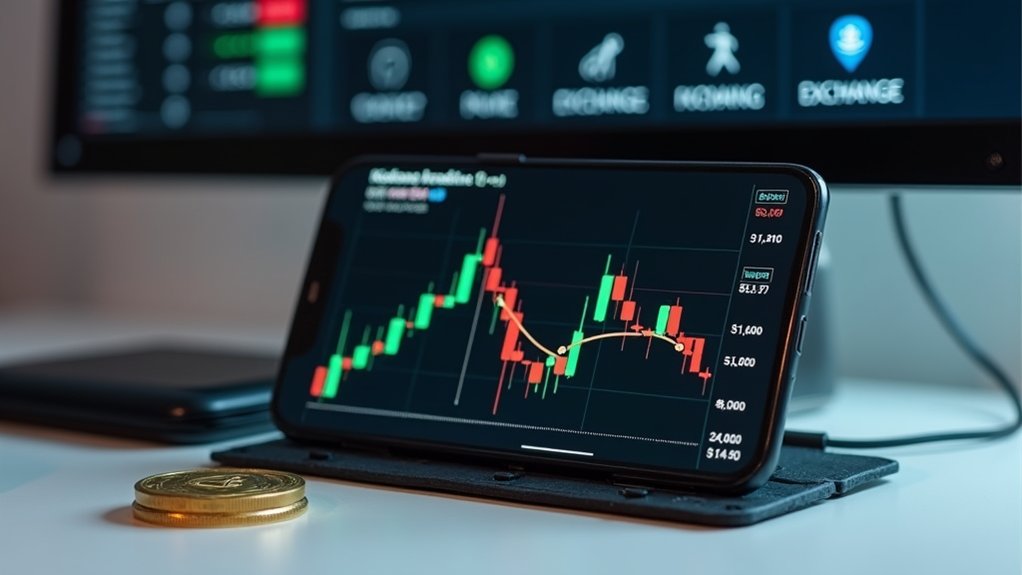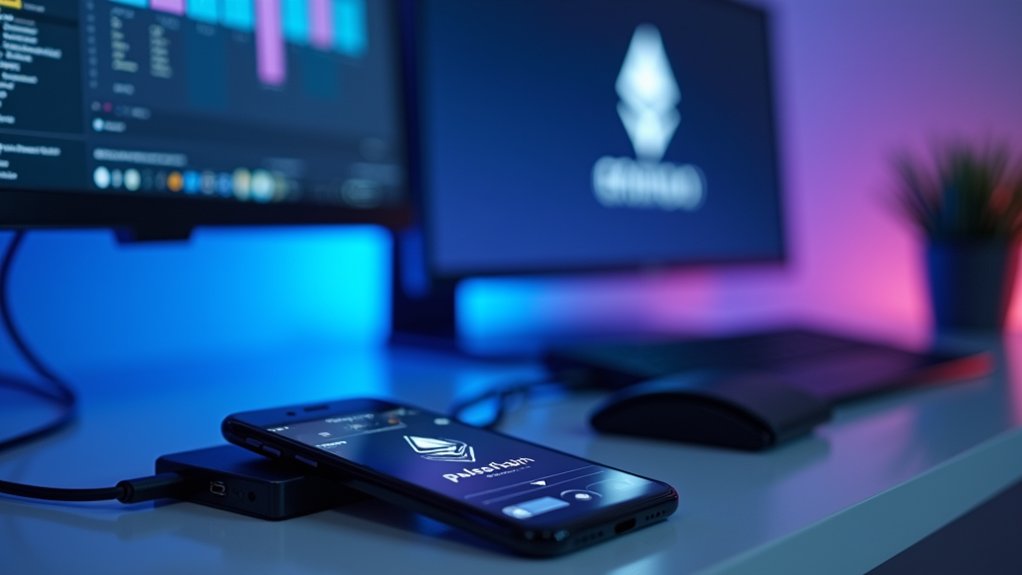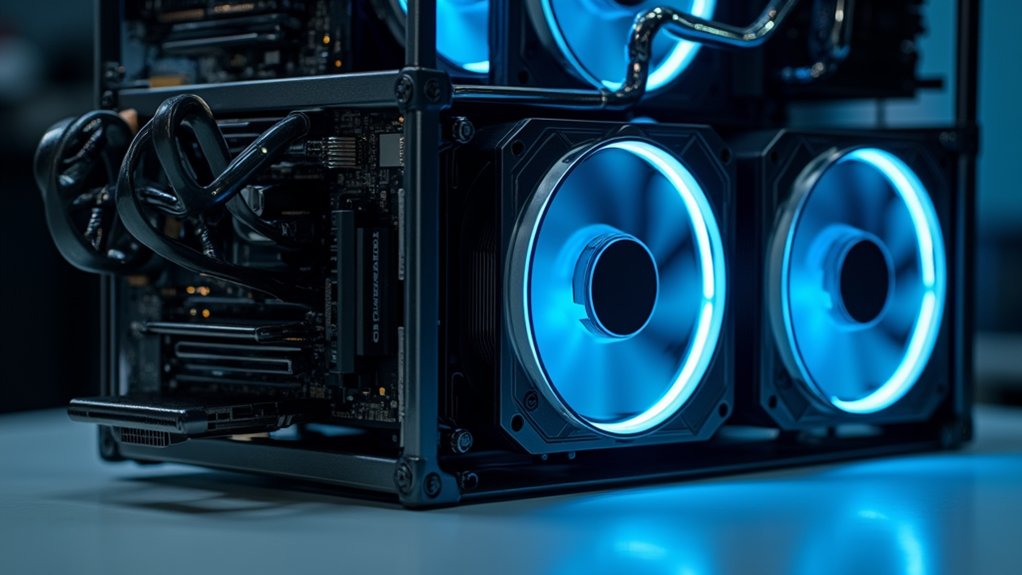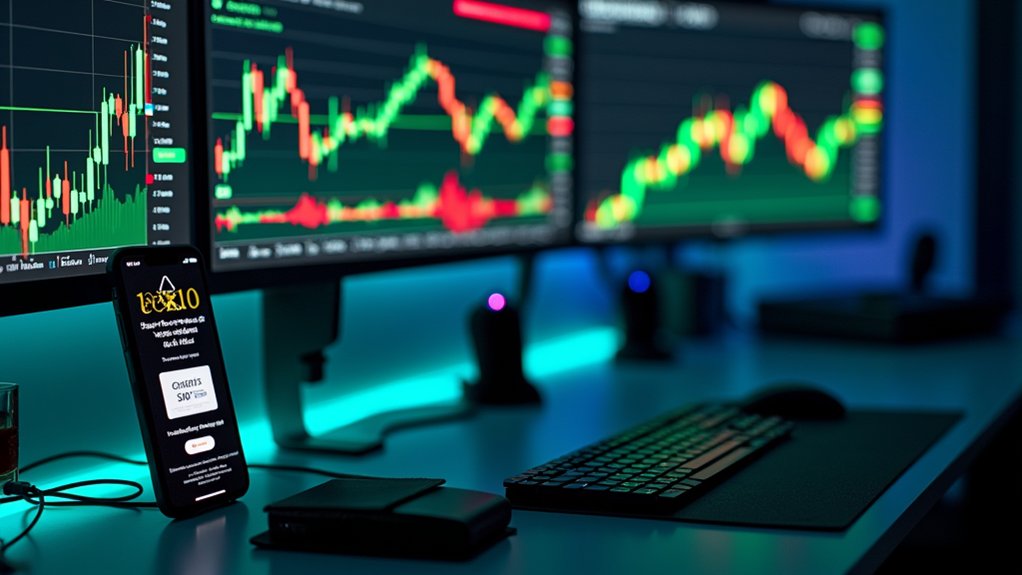To buy Kadena (KDA), investors must first register on compatible exchanges like Binance, KuCoin, or Gate.io, completing necessary verification procedures. After securing accounts with two-factor authentication, funds can be deposited via bank transfer or credit card, or by purchasing stablecoins like USDT. Traders then execute market or limit orders to acquire KDA tokens, which should subsequently be transferred to personal wallets for enhanced security. The following steps outline this process in greater detail with specific platform considerations.
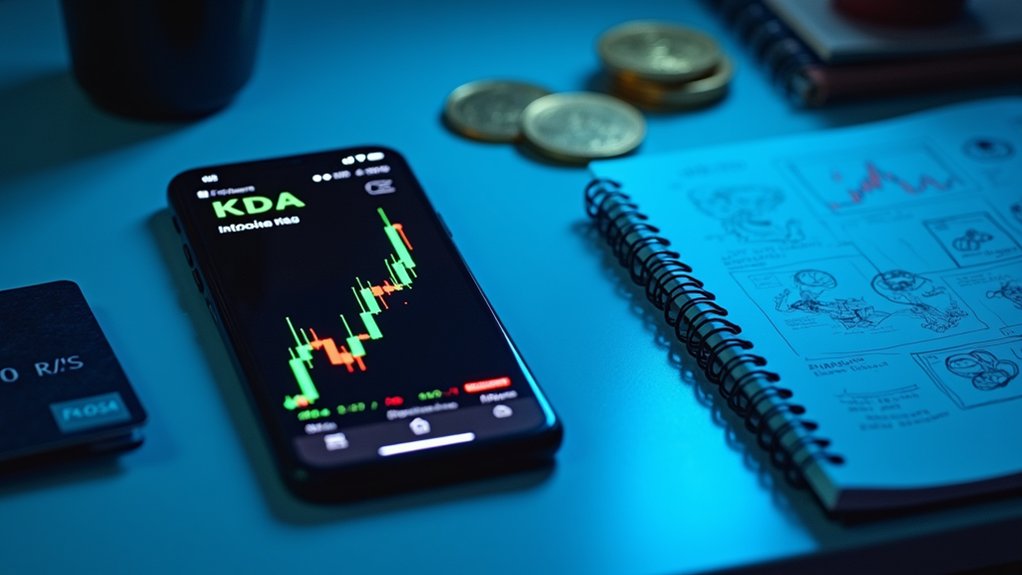
With the cryptocurrency market continuously expanding, investors seeking to diversify their digital asset portfolios are increasingly turning focus toward Kadena (KDA), a unique blockchain platform that offers scalability through its multi-chain architecture.
Purchasing KDA has become increasingly accessible through several reputable cryptocurrency exchanges, with Binance, KuCoin, OKX, MEXC Global, and Gate.io emerging as the predominant platforms for KDA transactions. These exchanges offer various trading pairs, including KDA/USDT and KDA/BTC on Binance, while Gate.io provides additional flexibility with KDA/TRY pairs for Turkish investors, demonstrating the importance of considering regional availability when selecting an exchange.
Explore Kadena across top exchanges like Binance and KuCoin, with diverse trading pairs tailored to global investors.
The acquisition process begins with account registration on the chosen exchange, requiring standard email or mobile verification followed by implementation of robust security protocols, particularly two-factor authentication. KuCoin specifically requires setting up Google 2FA code and anti-phishing protection for maximum account security.
Following registration, investors must complete Know Your Customer (KYC) validation, a regulatory requirement that, while potentially time-consuming, enables full trading functionality.
Payment amalgamation represents the subsequent step, with exchanges offering diverse funding options including credit and debit cards for immediate purchases, traditional bank transfers for larger acquisitions, and third-party payment processors such as PayPal on platforms like KuCoin.
For investors preferring indirect acquisition methods, purchasing stablecoins like USDT or USDC initially, followed by conversion to KDA via spot trading, often provides enhanced liquidity and potentially lower fees. After completing your purchase, consider transferring your KDA to a personal wallet for enhanced security against potential exchange vulnerabilities. Stablecoins currently account for 83.88% of volume in KDA trading, making them the dominant pathway for acquisition.
Minimum purchase thresholds remain reasonably accessible, with some platforms permitting transactions beginning at $1, yielding approximately 25 KDA tokens at current market rates.
When executing trades, investors may opt for market orders for immediate execution at prevailing prices or limit orders to capitalize on specific price targets based on technical indicators such as Relative Strength Index or moving averages.
Post-transaction verification constitutes a critical final step, with investors advised to confirm successful receipt of tokens in their exchange wallets before considering the acquisition complete.
Through careful adherence to these procedural steps and diligent platform selection based on individual requirements, investors can effectively incorporate KDA into their cryptocurrency portfolios, potentially benefiting from Kadena's innovative blockchain architecture.
Frequently Asked Questions
What Is KDA Crypto Used For?
KDA serves as the native cryptocurrency for Kadena's Chainweb network, enabling transaction execution, smart contract deployment, and miner rewards through its Proof-of-Work consensus mechanism.
The token powers various DeFi applications, including decentralized exchanges, lending platforms, and liquidity pools, while allowing real-world asset tokenization and enterprise solutions.
Additionally, KDA supports cross-chain interactions, EVM compatibility, and underpins decentralized identification systems, establishing itself as a multifunctional utility token within the blockchain ecosystem.
How Volatile Is KDA Compared to Other Cryptocurrencies?
KDA demonstrates elevated volatility compared to established cryptocurrencies like Bitcoin, evidenced by its dramatic price range from $0.1213 to $28.25 within a single year.
Its market behavior reveals heightened sensitivity to regulatory announcements and network updates, while its braided Proof-of-Work system facilitates rapid trading that amplifies price fluctuations.
Though offering superior liquidity advantages on select platforms, KDA faces substantial volatility drivers through its multi-chain architecture and ongoing competition in the Layer-1 ecosystem.
Can I Mine KDA Myself?
Mining KDA is technically accessible to individuals, because Kadena uses an ASIC-resistant proof-of-work algorithm enabling GPU mining.
However, profitability depends on substantial initial hardware investment, electricity costs, cooling infrastructure, and technical expertise. Miners must configure specialized software, establish wallet security protocols, and join mining pools like F2Pool for consistent rewards.
The network's multi-chain architecture offers relative energy efficiency compared to Bitcoin, though smaller miners increasingly face competition from industrial-scale operations in regions with advantageous electricity rates.
What's the Maximum Supply of KDA Tokens?
The maximum supply of Kadena (KDA) tokens is capped at 1 billion units, representing a fixed upper limit that cannot be exceeded.
This definitive supply ceiling, established during the project's inception in 2019, creates tokenomic scarcity in accordance with a fundamental economic principle.
Within this allocation framework, 70% of tokens are designated for miners in the role of block rewards, while remaining portions are distributed among investors, ecosystem contributors, and other stakeholders according to predetermined ratios.
Is KDA Supported by Hardware Wallets?
Currently, Kadena (KDA) lacks direct support from major hardware wallet providers, creating a significant security limitation for investors seeking cold storage solutions.
The ecosystem's native wallets—Koala, Zelcore, and Chainweaver—operate without hardware wallet incorporation, while Enkrypt's beta wallet, developed in collaboration with MyEtherWallet, has announced plans for future Ledger compatibility but has not yet implemented this feature.
Users must rely on workarounds, including manual transfers between exchanges and non-custodial wallets.
